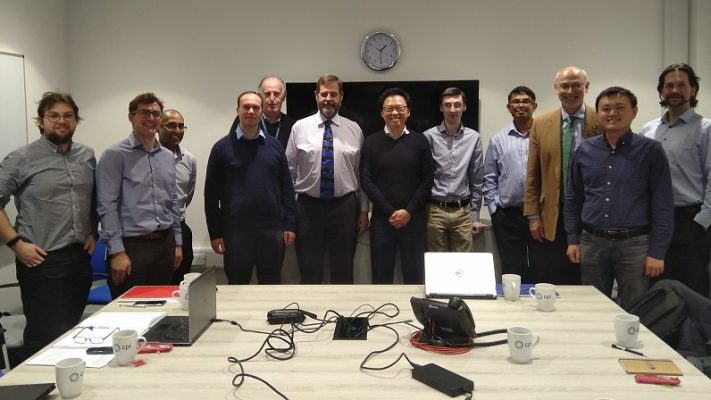The two-year Models for the Manufacturing of Particulate Process (Models MPP) project focused on establishing a generic framework and core capability to improve industrial productivity.
As part of the drive to provide more leverage and integration of the wealth of formulations expertise in the UK, the £700,000 project, funded by Innovate UK as part of CPI’s National Formulation Centre Strategic Projects Programme, has facilitated the translation of the UK’s world-leading expertise in computational modelling and simulation for the manufacturing of particulate processes.
Connecting industry and university research groups with state-of-the-art technology has resulted in the development of a generic framework for translating particle models of industrial relevance into industrial practice. The developed framework incorporates a decision support methodology/tool for models development that will allow easier access and adoption by leading UK-based industrial organisations.
These models are expected to be deployed within industry to accelerate the development of innovative products and improve productivity and cost-effectiveness of product manufacturing processes.
This framework will provide guidance for the coupling of well-established computer modelling techniques at different size scales, to enable development scientists and engineers to develop models that simulate different parts of manufacturing processes from the dispensing of input materials through mixing, agglomeration and other subsequent processing steps.
Twin-screw wet granulation, a method used in a number of industry sectors, was used as an exemplar. Wet granulation is a process in which small primary particles are joined together using agitation and a liquid binder. The purpose is to improve the properties of very fine cohesive powders used in formulated products such as pharmaceuticals, ceramics, detergents and fertilizers.
Granulation is commonly used in the pharmaceutical industry during tablet manufacturing. Fine powders are granulated to improve flow prior to tableting and reduce the potential for dusting and other production issues. The formation of granules also helps to reduce segregation and improve the content uniformity of the final product which is critical for consistent product performance.
The academic partners at the Universities of Edinburgh and Sheffield conducted a review of the current state of the art and used this insight to develop coupled models using EDEM and PSE software platforms and the technology vendor’s expertise in developing industrially robust models. These models were validated using real life trials at the industrial partner’s production facilities.
While granulation is an important process in many industries, including pharmaceuticals, foods and agrochemicals, the framework provided by Models MPP means it can be broadly re-applied to other manufacturing operations and industries.
The legacy capability established from this project will be applied to other CPI strategic projects, e.g. in the development of a digital twin with a sister National Formulation Centre strategic project focused on a fully PAT enabled twin screw extruder (‘PROSPECT CP’).


The project has been funded by Innovate UK as part of CPI’s National Formulation Centre Strategic Projects Programme. The centre is pictured above
CPI was part of a highly-effective consortium that worked on the project, with key industrial contributions from Astra Zeneca, Pfizer, Procter & Gamble and Johnson Matthey, and SMEs including EDEM Simulations and Process Systems Enterprise (PSE).
High-profile academics from the Universities of Sheffield and Edinburgh also provided world-leading modelling expertise.
Dr Caroline Kelly, CPI Technology and Innovation Officer and manager of the Models MPP project, said: “It has been a privilege to work with the world-leading partners to deliver a step-change in how particle modelling can be translated from academia into real industrial formulations.
“It is also exciting to see the potential opportunities for how this new capability will be deployed, particularly in the new granulation capability recently established within our formulation facility.
“This modelling project is the first in a series of five capability-build projects to complete and we look forward to similar success stories over the next 18 months.”
An EDEM Simulations’ representative said: “This innovative project demonstrates the benefits of industry and academic organisations working together to share knowledge and advance technology developments.
“Coupling two different methodologies, Discrete Element Modelling at the particle scale and Population Balance Modelling at the meso-scale, will enable scientists to predict and improve the continuous manufacturing process, which in turn will lead to increased process efficiency and significant cost savings.
“It is the first time that market-leading commercial software are linking their modelling techniques to offer such an approach and we are pleased to have been key contributors to make this possible.”
Dr Sean Bermingham, Head of Formulated Products at PSE, said: “This CPI co-ordinated project has been an excellent demonstration of how the gPROMS Formulated Products Population Balance Modelling (PBM) environment developed through the ADDoPT pharmaceutical digital design project can be readily applied to other formulated products industries, including fast moving consumer goods and specialty chemicals.
“Additionally, the project provided a unique opportunity to move DEM-PBM coupling from the academic research stage to an industrially applied and commercially supported capability.
“The extensive progress made in the last two years has demonstrated the strength of this well-balanced consortium involving leading academics, early industry adopters, and technology providers.”



















